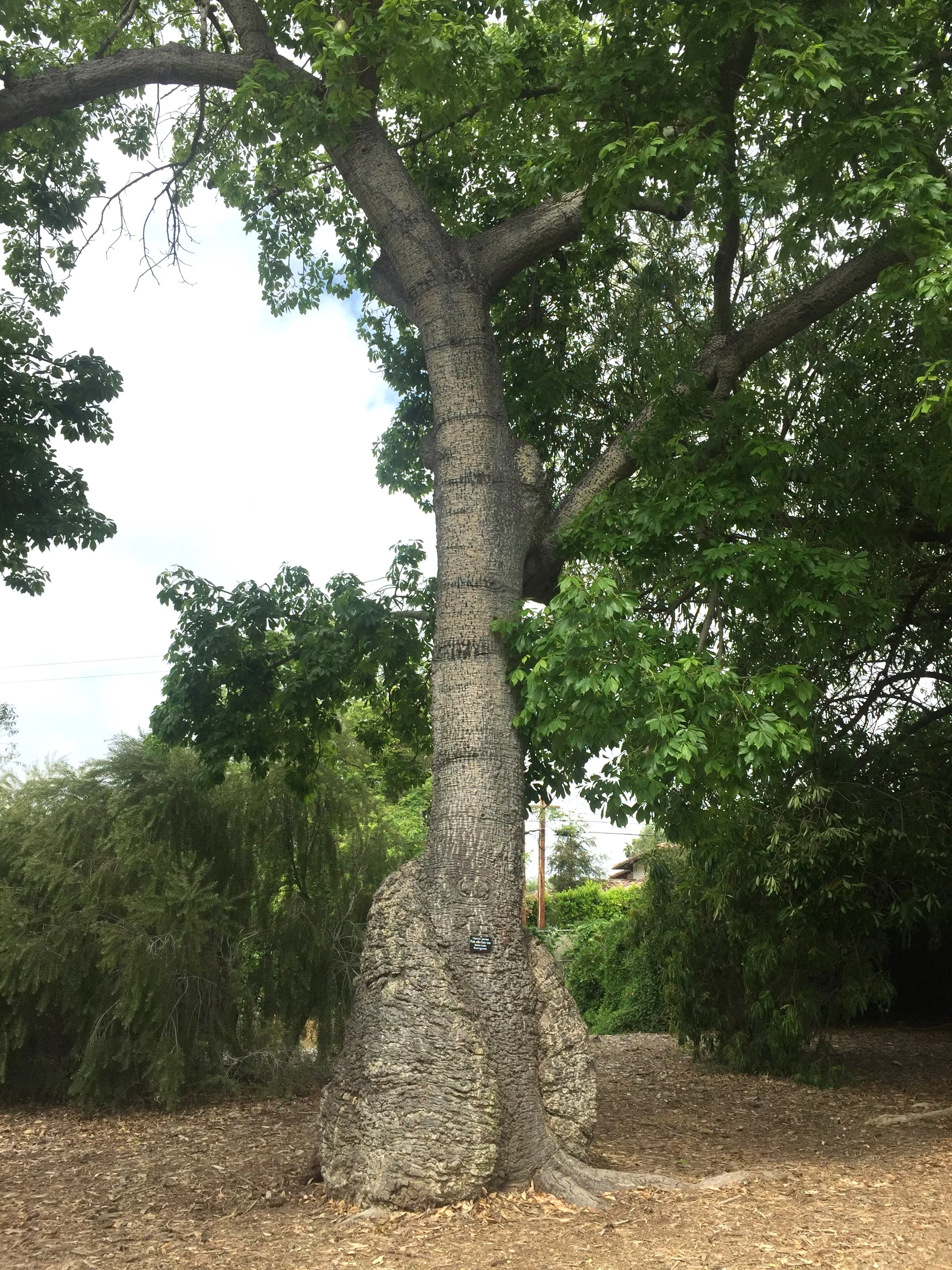From 2017 to now, I have photographed the different appearances of the Floss Silk Tree in different seasons. From the very bright and vivid maroon or light pink Floss Silk Tree in full bloom, to the large fruits, to the cotton balls after they burst, each stage is special. The floss silk tree has other common names, such as palo borracho (in Spanish literally “drunken stick”). In Bolivia, it is called toborochi, meaning “tree of refuge” or “sheltering tree. It is in the Malvaceae family. Its trunk is bottle-shaped. The trunk is also studded with thick, sharp conical prickles which deter wild animals from climbing the trees. The floss silk tree is cultivated mostly for ornamental purposes. The “cotton” inside the capsules can be used as stuffing. The wood can be used to make canoes, as wood pulp, and to make paper. The bark has been used to make ropes. From the seeds it is possible to obtain vegetable oil (both edible and industrially useful).
從 2017 年到現在,我在不同季節拍下了美人樹的不同風貌,從非常鮮豔亮麗的紫紅色或淡粉紅色的美人樹盛開的時節,到長很大的果食,到破裂後有棉花團,每一階段都很特別。美人樹還有其他常用别名,例如 palo borracho(西班牙語字面意思是“醉酒的棍子”)。在玻利維亞,它被稱為 toborochi,意思是“避難樹”或“庇護樹”。(註:維基百科列出别名包括美人櫻、酒瓶木棉、美麗異木棉)。它是錦葵科。它的樹幹是瓶形的。樹幹上還佈滿了又厚又尖的錐形刺,這些刺可以阻止野生動物爬樹。美人樹主要用於觀賞用。膠囊內的“棉花”可用作填充物。木材可用於製造獨木舟、木漿和造紙。樹皮被用來製作繩索。從種子中可以取得植物油(可食用和工業用)。




























Notes 筆記
- The floss silk tree (Ceiba speciosa) has other common names, such as palo borracho (in Spanish literally “drunken stick”). In Bolivia, it is called toborochi, meaning “tree of refuge” or “sheltering tree. It is in the Malvaceae family.
- The natural habitat of the silk floss tree is in South American such as the north-east of Argentina, east of Bolivia, Paraguay, Uruguay and southern Brazil. It is resistant to drought and moderate cold.
- Its trunk is bottle-shaped. The trunk is also studded with thick, sharp conical prickles which deter wild animals from climbing the trees.
- The flowers are creamy-whitish in the center and pink towards the tips of their five petals. Their nectar is known to attract insect pollinators, as well as hummingbirds.
- The fruits are ligneous ovoid capsules, 8 inches long, which contain bean-sized black seeds surrounded by a mass of fibrous, fluffy matter reminiscent of cotton or silk.
- The floss silk tree is cultivated mostly for ornamental purposes. The “cotton” inside the capsules can be used as stuffing. The wood can be used to make canoes, as wood pulp, and to make paper. The bark has been used to make ropes. From the seeds it is possible to obtain vegetable oil (both edible and industrially useful).
- 美人樹還有其他常用别名,例如 palo borracho(西班牙語字面意思是“醉酒的棍子”)。在玻利維亞,它被稱為 toborochi,意思是“避難樹”或“庇護樹”。(註:維基百科列出别名包括美人櫻、酒瓶木棉、美麗異木棉)。它是錦葵科。
- 美人樹的生長地位於南美,阿根廷東北部、玻利維亞東部、巴拉圭、烏拉圭和巴西南部。 它耐乾旱和中度寒冷。
- 它的樹幹是瓶形的。樹幹上還佈滿了又厚又尖的錐形刺,這些刺可以阻止野生動物爬樹。
- 花的中心呈乳白色,五個花瓣的尖端呈粉紅色。 它們的花蜜可以吸引昆蟲傳粉者和蜂鳥。
- 果實是木質卵形蒴果,長 8 英寸,內含豆大小的黑色種子,周圍環繞著大量纖維狀的蓬鬆物質,讓人聯想到棉花或絲綢。
- 美人樹主要用於觀賞用。膠囊內的“棉花”可用作填充物。木材可用於製造獨木舟、木漿和造紙。樹皮被用來製作繩索。從種子中可以取得植物油(可食用和工業用)。
References 參考資料
- Wikipedia: Ceiba speciosa
- 維基百科: 美人樹
Plants Posts 植物的帖子
Comments